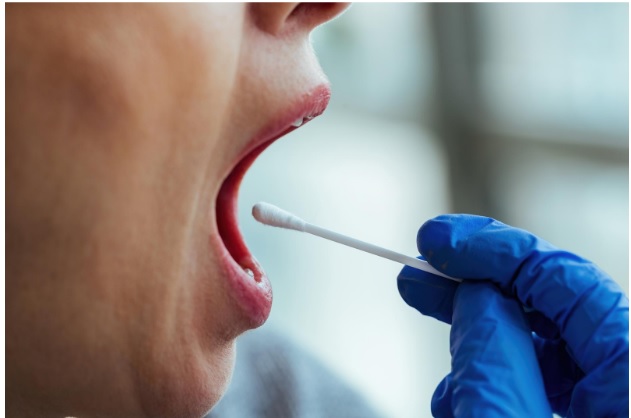Leukoplakia is a descriptive term for grey or white patches in the mouth that do not resolve on their own. They can appear on the tongue, inner lip, or gums and may not be noticed until pain or a visible change raises suspicion. Most cases are minor, but ongoing or abnormal signs necessitate seeking medical care.
This post explains when to consult a doctor, what warning signs to look for, and how early leukoplakia treatment can support better oral health and long-term well-being.
Understanding Leukoplakia and Its Causes
Leukoplakia appears as persistent white or grey patches in the mouth that cannot be scraped off. These patches may form on the gums, inner cheeks, tongue or the floor of the mouth.
Although some instances are benign, others can necessitate leukoplakia treatment right away to avoid complications. Leukoplakia is frequently associated with the use of tobacco, alcohol or chronic irritation from rough dentures or teeth. In some cases, leukoplakia occurs with no identifiable cause or apparent contributing factor.
When is it Time to See a Doctor?
Although leukoplakia may initially cause minor discomfort, certain signs indicate the need for medical treatment. These are:
- Patches lasting longer than two weeks
- Thickened, raised or hardened surfaces
- Red patches (erythroplakia) that accompany white ones
- Pain or soreness in the mouth
- Chewing or swallowing difficulties
Any one of these indicators may point to the possibility of tissue changes. Early assessment serves to eliminate risks and provide the appropriate course of treatment. Even when symptoms are mild, it is best not to self-diagnose or overlook changes for a while.
How is Leukoplakia Diagnosed?
Physicians typically start by checking the affected area. If the look raises concern, a biopsy is usually suggested. A biopsy involves sending a small amount of tissue to a laboratory for testing to ascertain if there are any cancerous or precancerous cells present.
Diagnosis is not only important for current leukoplakia treatment but for monitoring how the condition progresses or improves over time.
In some cases, imaging or additional tests might be recommended in order to comprehend the depth and extent of the tissue alteration. Accurate diagnosis also serves to identify other disorders presenting with comparable symptoms but necessitating alternative measures.
Treatment Alternatives for Leukoplakia
Treatment varies according to the size, location and pathology of the lesion. For small lesions without abnormal cell growth, the physician may suggest lifestyle modification and observation. This may involve quitting tobacco use, reducing alcohol consumption and practising better dental hygiene.
For lesions with dysplasia or abnormal cells, medical treatment is required. Some treatments include:
- Surgical removal of the patch
- Laser elimination of the target tissue
- Cryotherapy (freezing)
- Electrosurgery
In some cases, your doctor may utilise topical medication, but aftercare is still necessary regardless of the approach. Treatment plans are typically personalised to the patient’s health history and risk factors.
Prevention and Long-Term Care
Although the treatment of leukoplakia is important, its prevention plays a vital role in controlling the recurrence of leukoplakia.
Leukoplakia’s risk can be reduced by individuals taking the following precautions:
- Avoiding tobacco in all forms
- Reducing alcohol intake
- Visiting the dentist for regular check-ups
- Wearing properly fitted dental appliances
- Practising oral hygiene
Even after treatment, patients must inspect their mouth for new or recurring patches. Follow-up visits are imperative every few months, as advised. Maintaining regular oral hygiene and lifestyle habits decreases the risk of recurrence dramatically.
The Importance of Timely Consultation
Individuals tend to ignore oral health issues until pain occurs. In leukoplakia, though, early diagnosis can be a game-changer. If detected and addressed early before progression, the outcome is usually positive. The majority of patches are benign, but those with tissue changes may become more advanced if neglected.
Pursuing medical attention at the appropriate time guarantees peace of mind and prompt treatment, particularly when the condition starts causing disruption to usual eating or talking. It also avoids unnecessary worry that arises from uncertainty or self-diagnosis.
Handling Worries with a Clear Mind
Seeing a patch in the mouth might automatically lead to worry, but not all lesions are harmful. Most of them heal once the contributory factor is eliminated. Maintaining a calm, informed approach, guided by a physician’s advice, aids in curing both physical and psychological conditions. The aim is not to alarm but to act wisely and on time.
Keeping yourself mindful of your own dental health can make a difference. Self-awareness, routine check-ups and open communication with your doctor are all key tools for taking early action.
Conclusion
Leukoplakia is not always a severe condition but it should never be overlooked. Unusual or chronic changes in the mouth require medical consultation. By being watchful for warning signs and seeing a doctor when the symptoms persist, anyone can take charge of their well-being and prevent unnecessary complications. Professional diagnosis, proper leukoplakia treatment and follow-up consultation provide the most effective means of achieving long-term oral health.
